What is a RAID Volume?
Safeguarding information is more crucial than ever, and RAID technology is a key player in achieving data security and performance optimization. But what exactly is a RAID volume? Simply put, a RAID (Redundant Array of Independent Disks) volume is a virtualized, logical storage unit created by combining multiple physical drives into a single storage array. This setup not only maximizes storage efficiency but also enhances data redundancy, ensuring that data remains accessible even if one drive fails. RAID volumes are used in various storage solutions to achieve higher performance or additional data protection, depending on the RAID configuration. Understanding RAID volumes—and the methods available to recover them—is essential for anyone seeking to make the most of modern data storage technology.
Why Create a RAID Volume?
What is a RAID? RAID volumes are integral to modern data storage solutions, offering substantial benefits for data reliability, redundancy, and performance. By grouping multiple physical drives into a single RAID volume, users can achieve storage configurations that not only safeguard data but also improve system efficiency. Different RAID levels, such as RAID 0, RAID 1, and RAID 5, cater to various needs—whether the goal is maximizing performance, securing redundancy, or balancing both.
Each RAID level has unique features that make it suitable for specific scenarios. For instance, RAID 0 is popular for speed but lacks redundancy, while RAID 1 mirrors data for excellent reliability. RAID 5, on the other hand, strikes a balance by providing both redundancy and efficient storage utilization. Here’s a breakdown of the most commonly ways to set up a RAID, highlighting their performance, redundancy, and drive requirements:
| RAID Level | Performance | Redundancy | Minimum Drives Required | Best Suited For |
|---|---|---|---|---|
| RAID 0 | High | None | 2 | High-speed applications |
| RAID 1 | Moderate | High (Mirroring) | 2 | Data redundancy and reliability |
| RAID 5 | Moderate | Moderate (Parity) | 3 | Balanced performance and redundancy |
| RAID 6 | Moderate | High (Double Parity) | 4 | High redundancy and larger storage arrays |
| RAID 10 | High | High | 4 | High performance and redundancy for critical data |
Each RAID level has its trade-offs in performance and data protection, making it essential to choose the right RAID configuration based on storage needs and failure tolerance. By understanding these distinctions, users can create RAID volumes optimized for their unique data environments.
What Happens If I Delete a RAID Volume?
Deleting a RAID volume can have serious and often irreversible consequences. When a RAID volume is deleted, all data within that volume is typically lost, as the logical structure that organizes the data across multiple drives is removed. This means the data may no longer be accessible, even if the physical drives remain intact. In addition to data loss, deleting a RAID volume can complicate recovery efforts because the RAID configuration itself—the key to reconstructing the data—is erased.
For individuals and organizations relying on RAID for critical storage, accidental deletion or corruption of a RAID volume underscores the importance of having a RAID data recovery solution in place. RAID data recovery tools are specifically designed to analyze and restore lost data from deleted or damaged RAID volumes, helping to minimize data loss and restore access to valuable information. Using professional RAID recovery software or consulting with a data recovery specialist can be essential steps if a RAID volume is deleted or compromised.
How to Recover a RAID Volume
Recovering data from a RAID volume can be complex, but using specialized RAID/RAIDZ recovery tools can simplify the process and improve the chances of data retrieval. RAID volumes can fail for various reasons, including hardware malfunctions, accidental deletion, or corruption due to software issues. When faced with these scenarios, RAID recovery tools are often the first line of defense, allowing users to recover lost or inaccessible data without the need for physical repairs.
One powerful solution is DiskInternals RAID Recovery™ software, a professional tool designed specifically for restoring data from damaged or deleted RAID volumes. DiskInternals RAID Recovery™ offers a user-friendly interface and advanced algorithms that can scan RAID configurations to recover RAID and to reconstruct the original data. Before opting for physical repairs or costly recovery services, using such software is an efficient and often effective choice, allowing users to attempt data recovery in a controlled environment.
RAID Volume vs. RAID Array: What’s the Difference?
Understanding the distinction between a RAID volume and a RAID array is essential in RAID management. A RAID volume refers to the logical partition created within a RAID setup, which organizes data across multiple drives as a single unit for redundancy or performance. In contrast, a RAID array is the collection of physical hard drives that make up the underlying structure of the RAID setup.
In simple terms, the RAID array is the physical hardware, while the RAID volume is the logical, user-accessible portion that organizes and manages data within that hardware. This distinction helps clarify RAID configurations and aids in better planning for data recovery and maintenance.
Tip: what is RAID hard drive?Best Practices for Managing RAID Volumes
Effectively managing RAID volumes is essential for maintaining data integrity and minimizing the risk of data loss. Key strategies include performing regular backups, monitoring disk health, and keeping firmware updated. Regular backups ensure that data remains recoverable even if the RAID volume experiences severe failure. Monitoring disk health can help detect early signs of drive wear or malfunction, allowing for timely replacements before data loss occurs. Updating firmware is also critical, as newer versions often fix bugs and enhance system stability. Even with these practices, having a reliable data recovery solution is crucial, as RAID failures can occur unexpectedly. Ensuring that RAID recovery tools are available can make all the difference in quickly and effectively restoring access to data.
Best Tools to Recover Deleted RAID Volumes: DiskInternals RAID Recovery™
When it comes to RAID volume recovery, DiskInternals RAID Recovery™ free RAID recovery software stands out as a premier choice, offering a suite of powerful features tailored specifically for recovering data from damaged or deleted RAID volumes. This software is designed for both professionals and individual users, providing comprehensive support across various RAID levels and configurations. Here’s a closer look at what makes DiskInternals RAID Recovery™ a top solution for RAID data recovery:
Key Features
- Automatic RAID Detection: DiskInternals RAID Recovery™ can automatically detect RAID parameters, such as block size and order, even if the RAID configuration data is missing. This is especially helpful in cases where users don’t know the specifics of their RAID setup.
- Support for Multiple RAID Levels: The software supports an extensive range of RAID levels, including RAID 0, RAID 1, RAID 5, RAID 6, RAID 10, and custom configurations. This flexibility makes it suitable for nearly any RAID setup, whether it’s a straightforward mirror or a complex array with distributed parity.
- Advanced Scanning Algorithms: DiskInternals RAID Recovery™ uses deep scanning algorithms to retrieve lost files, even if they’re on a RAID volume that’s been heavily corrupted or accidentally deleted. It can identify and reconstruct file structures, maximizing recovery success.
- File Preview Functionality: Before recovering files, users can preview them to ensure they’re selecting the correct data. This feature is crucial when restoring large datasets, as it reduces the time spent on recovery by allowing users to target specific files.
- Virtual RAID Reconstruction: DiskInternals RAID Recovery™ can create a virtual RAID array for testing and recovery purposes without modifying the original disks. This feature lets users safely verify their RAID recovery setup and preview data before making any changes to the physical drives.
- Hex Editor for Advanced Users: For those with technical expertise, DiskInternals includes a built-in hex editor, enabling low-level data inspection and modification. This level of control is beneficial for advanced users who may need to perform detailed analysis or data repair within the RAID array.
- User-Friendly Interface: Despite its technical capabilities, DiskInternals RAID Recovery™ offers an intuitive interface, guiding users through the recovery process step-by-step. This simplicity makes it accessible to beginners while still meeting the needs of advanced users.
Benefits of Using DiskInternals RAID Recovery™
- High Success Rate: DiskInternals RAID Recovery™ is known for its high success rate, particularly with complex RAID setups, thanks to its robust scanning technology and parameter auto-detection.
- Compatibility Across Storage Systems: The software is compatible with RAID setups from various environments, including NAS devices, servers, and standalone RAID controllers.
- Data Safety: With virtual reconstruction capabilities and file previews, DiskInternals RAID Recovery™ minimizes the risk of further data loss, allowing users to securely recover files without altering the original drives.
- 24/7 Support: DiskInternals offers dedicated technical support to assist with complex recovery scenarios, adding an extra layer of assurance for critical data recovery efforts.
Why Choose DiskInternals RAID Recovery™?
For anyone facing data loss from a deleted, corrupted, or damaged RAID volume, DiskInternals RAID Recovery™ is a highly recommended solution. Its combination of powerful recovery algorithms, comprehensive RAID level support, and user-friendly features make it ideal for both personal and professional use. With the option to test the software’s capabilities through a free trial, users can evaluate its effectiveness before committing to a full recovery, making it a reliable and accessible choice in the RAID recovery landscape.
RAID Volume Recovery: Step-by-Step Guide
To recover a RAID volume using DiskInternals RAID Recovery™, follow these steps:
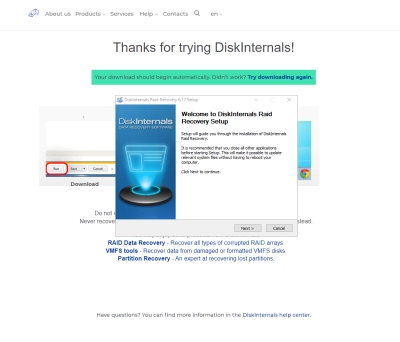
- 1. Download and Install: Start by downloading DiskInternals RAID Recovery™ and installing it on a system connected to the RAID drives.
- 2. Launch the Software: Open DiskInternals RAID Recovery™, which will automatically scan and detect connected RAID configurations.
- 3. Select the RAID Volume: Choose the specific RAID volume you need to recover from the list of detected configurations.
- 4. Scan for Lost Data: Initiate the scan to search for recoverable files within the RAID volume. DiskInternals offers various scanning modes, including deep scans for thorough recovery.
- 5. Preview and Recover: Once the scan completes, you can preview recoverable files. Select the files you wish to restore, then proceed with the recovery process to save them in a secure location.
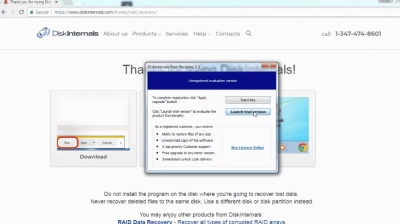
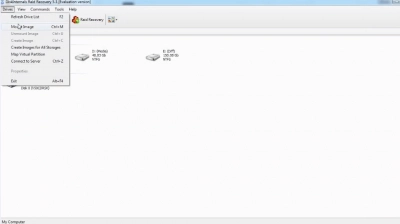
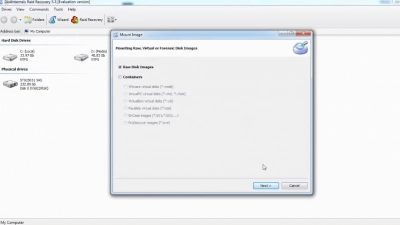
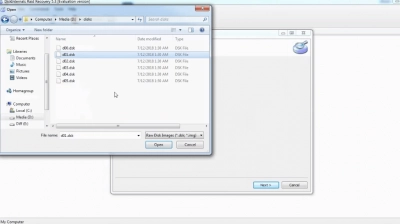
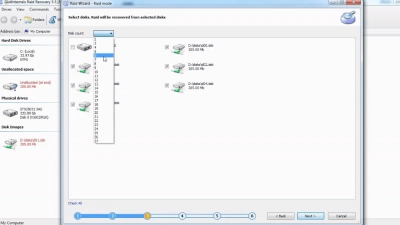
DiskInternals RAID Recovery™ simplifies the RAID recovery process, making it accessible even for those new to data recovery. This software’s step-by-step approach allows users to recover valuable data with confidence and minimal technical hassle.
Conclusion: RAID Volume Management & Recovery
RAID volumes play a vital role in enhancing data reliability and system performance, making them an essential component in today’s data storage environments. By organizing multiple physical drives into a single, logical storage unit, RAID volumes provide data redundancy, protect against drive failures, and improve read/write speeds, depending on the configuration. However, as valuable as RAID is, it is not immune to risks—hardware malfunctions, accidental deletions, and unexpected corruptions can jeopardize access to critical data.
This is why having reliable RAID recovery tools is essential. Solutions like DiskInternals RAID Recovery™ offer users an efficient way to recover lost data from damaged or deleted RAID volumes, ensuring minimal disruption in the event of a failure. By integrating strong management practices with trusted recovery software, users can safeguard their RAID volumes and maintain control over their most valuable information, no matter the situation.
